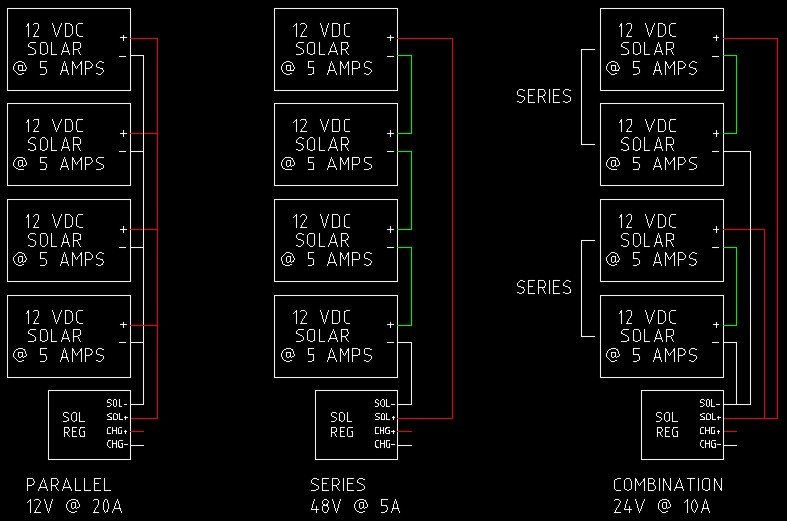explained very well there Condor22
One thing to keep in mind but, is the maximum input voltage of the charge controller.
this extract from the Victron website
"Exceeding the input voltage range will (as it did with the PWM controllers) damage the controller permanently".
https://www.victronenergy.com/blog/...ar-modules-to-the-new-mppt-charge-regulators/
and this bit on max input power (total Watts), with the caveat of not exceeding max voltage
https://community.victronenergy.com...ns-if-you-add-more-solar-wattage-than-th.html
.
One thing I have been told, but I don't know how correct it is, some charge controllers will 'clip' the input voltage if it exceeds the maximum.
This would reduce the max power that could be drawn from a PV system
ie, If you had 2x 200W (400W total) panels in series running at a nominal 18V each, that would deliver 36V to your charge controller @11.1A
If your charge controller clipped the input voltage to 25V then you would likely only be getting around 25V x11.1A =278W, instead of the 400W possible.
Domestic systems are usually designed for higher voltages, but mobile (car/caravan) system are usually somewhere between 20-30V input.
For example, my Projecta IDC45 is rated at 28Vdc max solar input. I have seen others with a 23Vdc max solar input.
(The max alternator input voltage is higher)
Nightjar, where you have stated you have panels in series, but your system has never failed, I suspect that yours may be clipping the input voltage as above, hence not reaching best efficiency & losing input power.




